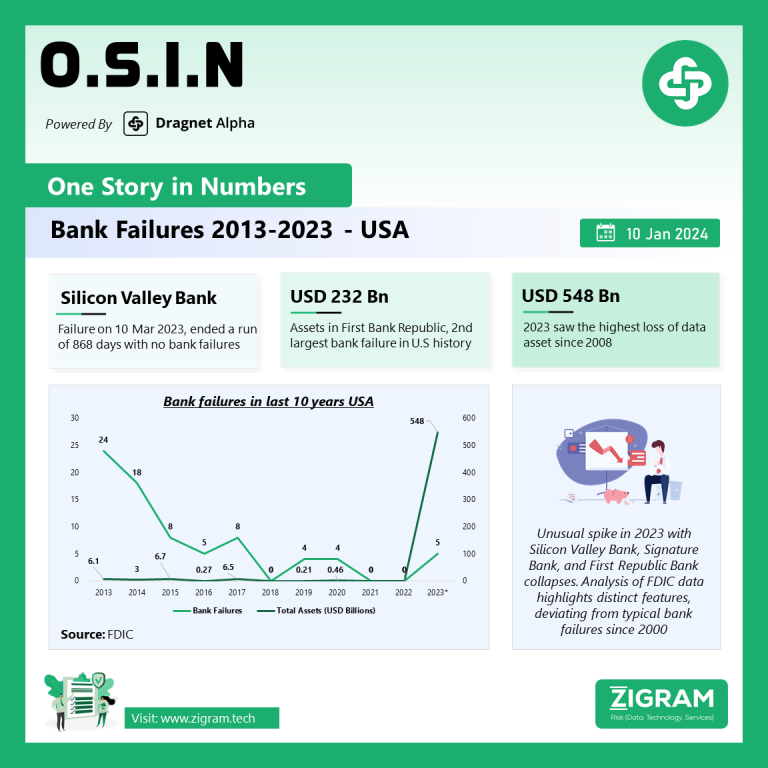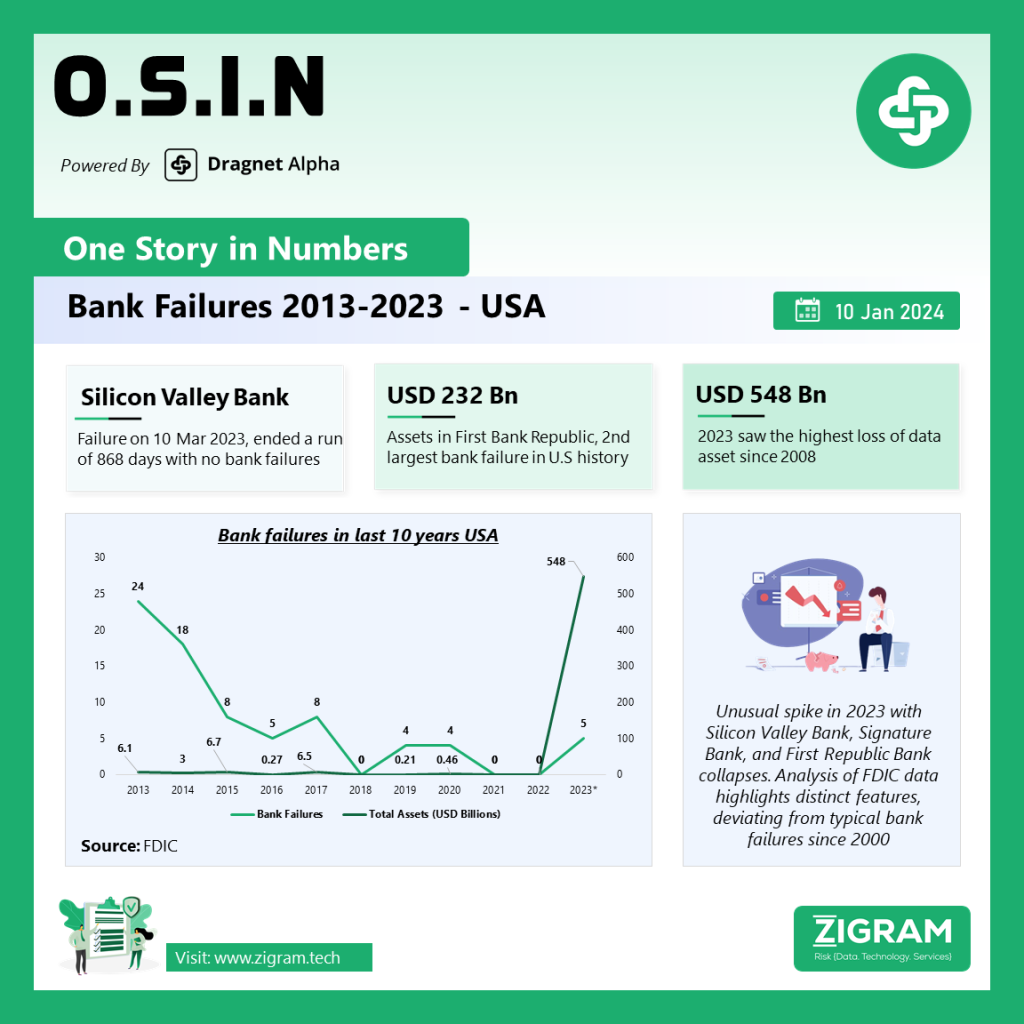Published Date:
Bank failures are not uncommon, with 568 occurring in the U.S. since January 1, 2000, averaging almost 25 per year. However, the years leading up to 2023 witnessed an unusual trend, with bank collapses slowing significantly from 2013 to 2020, averaging fewer than five per year. The sudden resurgence in 2023, marked by the back-to-back collapses of Silicon Valley Bank (SVB) and Signature Bank, followed by First Republic Bank, has raised eyebrows and demands a closer examination.
From 2001 to 2007, the U.S. experienced a low average of 3.57 bank failures per year. The years 2021 and 2022 saw zero bank failures, creating a sense of stability. The recent turmoil began with SVB and Signature Bank in March 2023, both ranking as the second and third-largest bank failures in U.S. history at the time.
What sets apart the 2023 collapses is their scale and circumstances. The first three banks to fail in 2023 were major financial institutions, each holding over USD 100 billion in assets. Primarily catering to wealthy clients and startups, these banks faced a unique challenge—the majority of their deposits were uninsured, exceeding the USD 250,000 FDIC insurance limit.
First Republic Bank, collapsing in May 2023, became the second-largest bank failure in U.S. history, boasting $232 billion in assets as of March 2023. Silicon Valley Bank, the third-largest failure, held $209 billion in assets at the end of 2022. Both banks were significant players in the tech industry, serving as prominent lenders for tech companies and startups, ranking among the top 20 largest banks in the country.
The shockwaves continued with Heartland Tri-State Bank’s failure in July and Citizens Bank of Sac City’s collapse in November. While smaller regional banks, their failures contributed to the overall anomaly in 2023. First Republic Bank’s demise, surpassing SVB’s, marked a critical moment in U.S. banking history.
Silicon Valley Bank’s failure on March 10, 2023, ended a remarkable streak of 868 days with no bank failures, the second-longest since 1933. The longest streak, from June 2004 to February 2007, lasted nearly three years, preceding the Great Recession.
Despite concerns about an impending recession triggered by these back-to-back bank failures, the five collapses in 2023 remained below historical norms. The economic landscape may be shifting, but the overall impact seems contained.
Two days after SVB’s failure, regulators shut down Signature Bank, initially the third-largest failure but now the fourth-largest. Signature Bank, a startup and tech industry favourite, held $110 billion in assets at the end of the previous year. The panic following SVB’s collapse led to a mass withdrawal of deposits from Signature Bank.
The contrast between these major collapses and the last bank failure before SVB, the Kansas-based Almena State Bank in 2020, is striking. Almena State Bank, a state-chartered institution, had a modest $69 million in assets. Similarly, Heartland Tri-State Bank and Citizens Bank of Sac City, the other two banks failing in 2023, held $139 million and $66 million in assets, respectively, close to the time of their collapse.
The unprecedented bank failures of 2023 have left a lasting impact on the financial sector, raising questions about the resilience of large financial institutions and the potential economic repercussions. The unique circumstances, including the size of the failed banks and the concentration of uninsured deposits, distinguish these collapses from historical trends. As regulators and analysts delve into the aftermath, the lessons learned from these failures will undoubtedly shape future banking regulations and risk management practices.
- #BankFailures
- #FinancialAnalysis
- #EconomicTrends
- #BankingCrisis
- #2023Collaps
- #FDICInsights
- #TechIndustryImpact
- #RiskManagement
- #EconomicResilience
- #BankingRegulations

